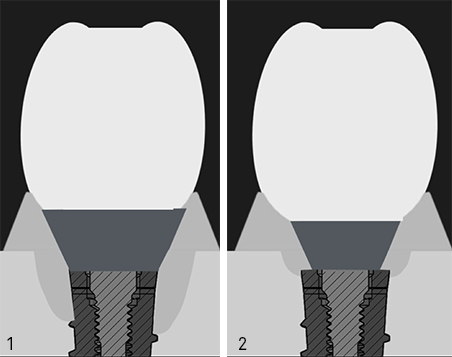

According to the applicable rules and regulations, I declare under my own responsibilities to be a dentist and therefore I am authorized to read the contents of this web site.


1. Implant without Platform Switching (PS) presenting an anatomical profile (divergent) that mimics the form of the tooth, and a protocol that envisions prosthesis disconnections. In this situation, tissues showed a tendency to apical migration. The inevitable gingival recession generated not only an aesthetic risk, but also the possibility of peri-implantitis.
2. Implant with PS presenting an anatomical profile (divergent) and a protocol that envisages prosthesis disconnections. The introduction of the concept of PS has allowed us to reduce peri-implant bone reabsorption, improving tissue stability. This concept allowed us to learn more about the relationship between the shape of posts and the stabilization of tissues by means of the circular fibres of connective tissue.
3. Implant with PS presenting a straight profile and a protocol that envisages prosthesis disconnections. The use of straight posts allowed us to increase tissue thickness and to improve results in a predictable way.
4. Implant with PS presenting a conical profile (convergent) of the XA posts and absence of disconnections. Finally, the introduction of XA posts for screw-retained and cemented prostheses allowed us not only to stabilize tissues, but also to promote their coronal migration over time.
